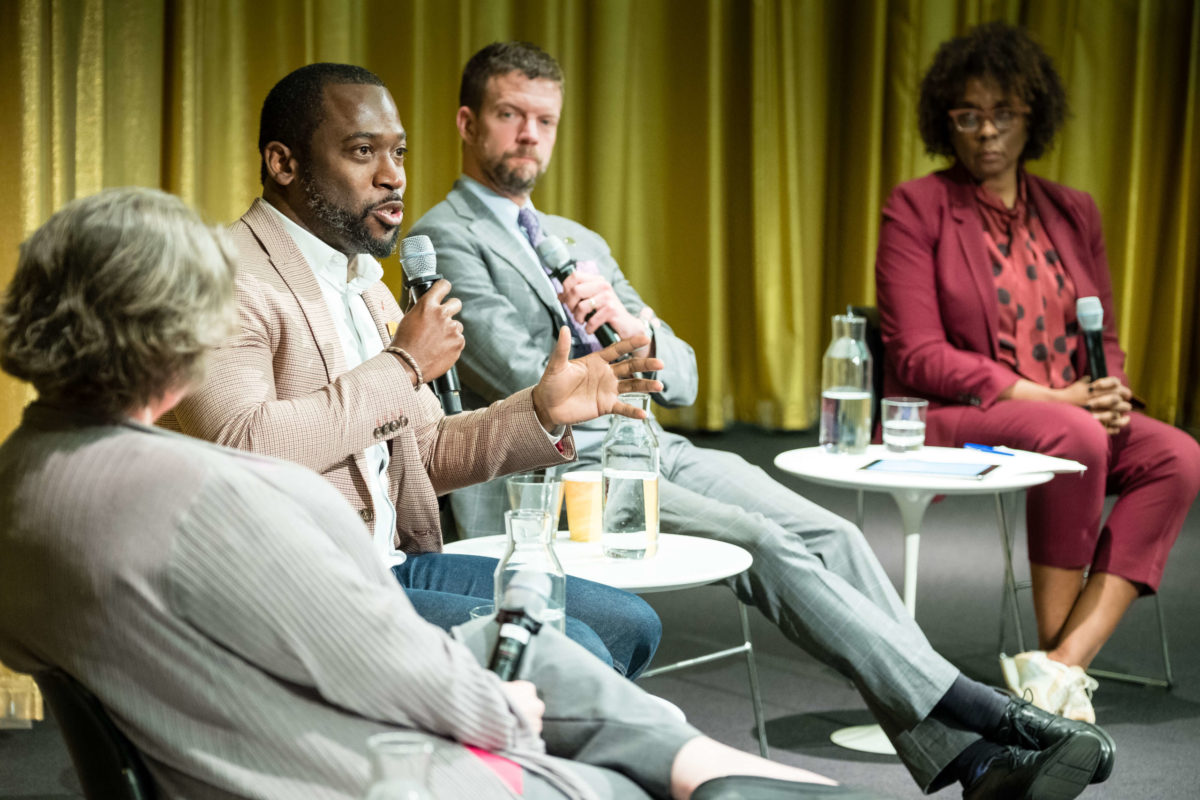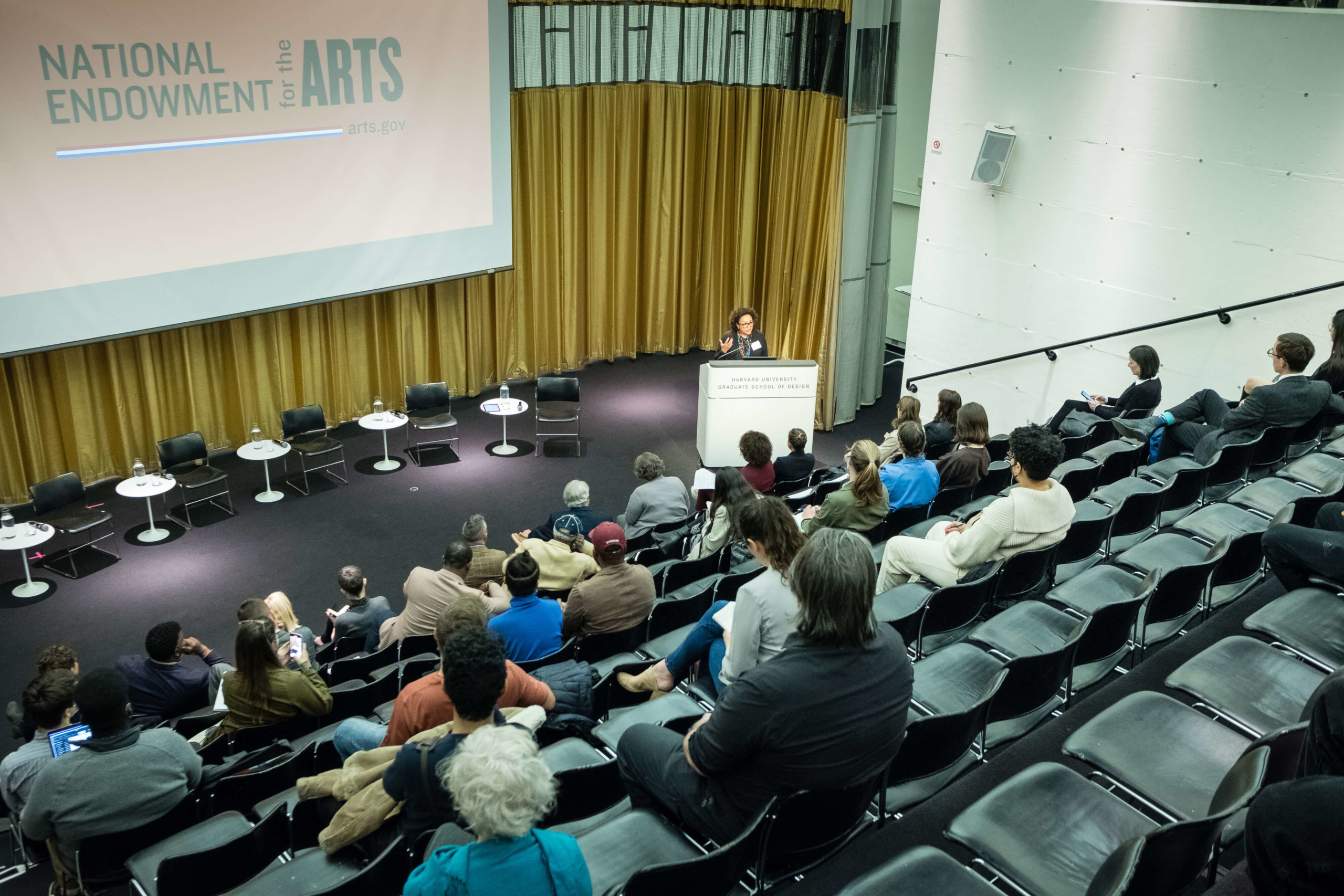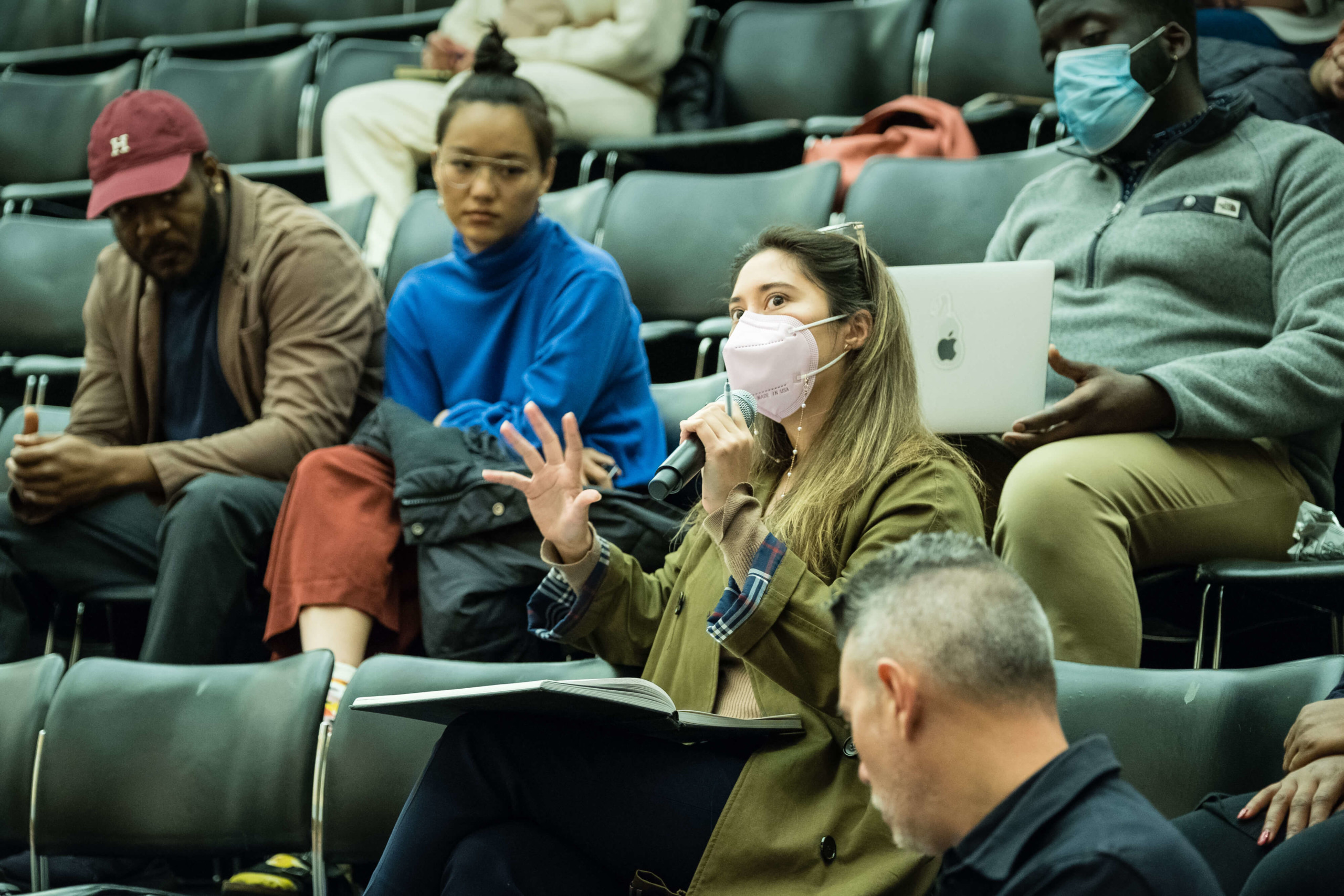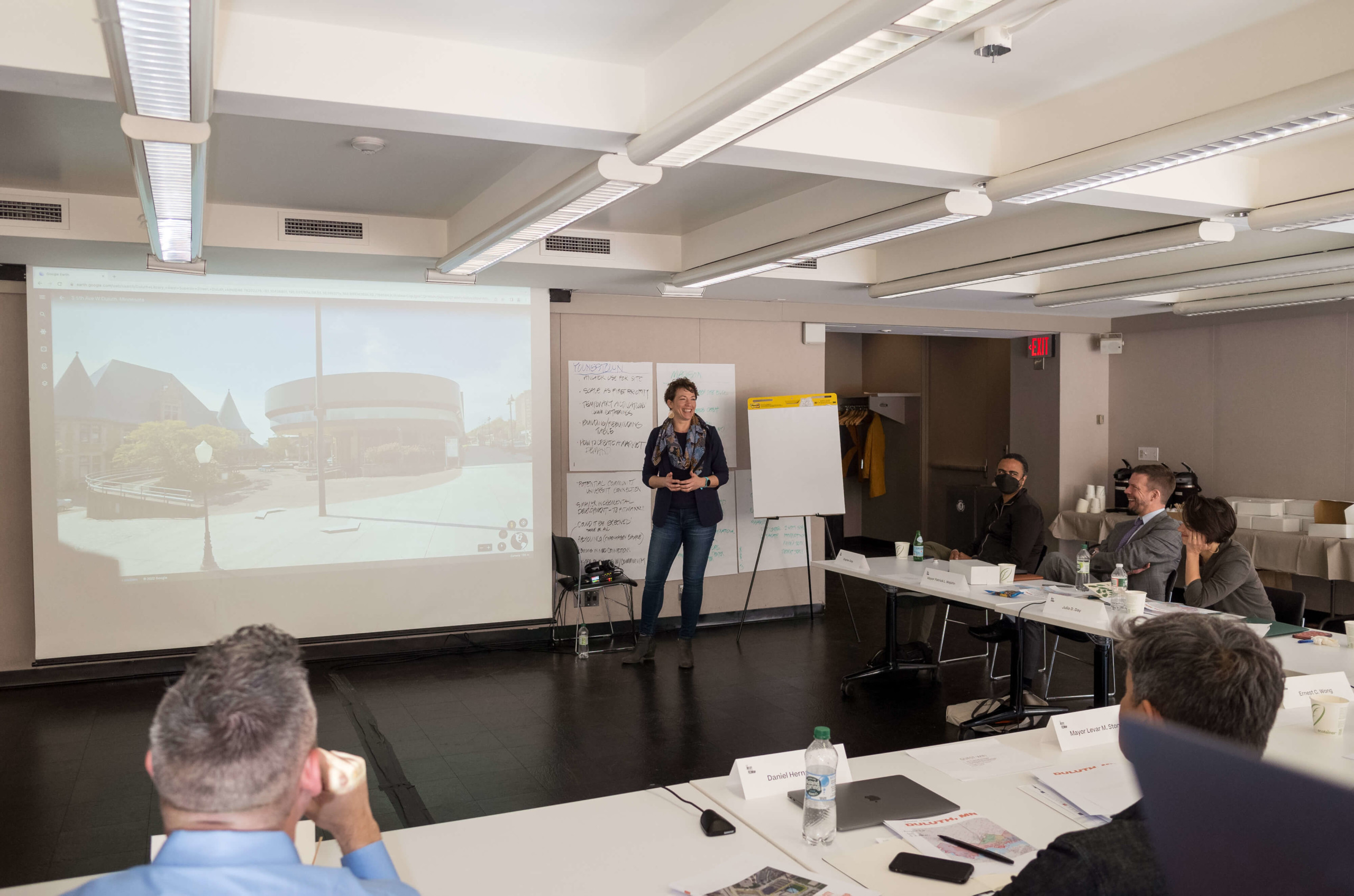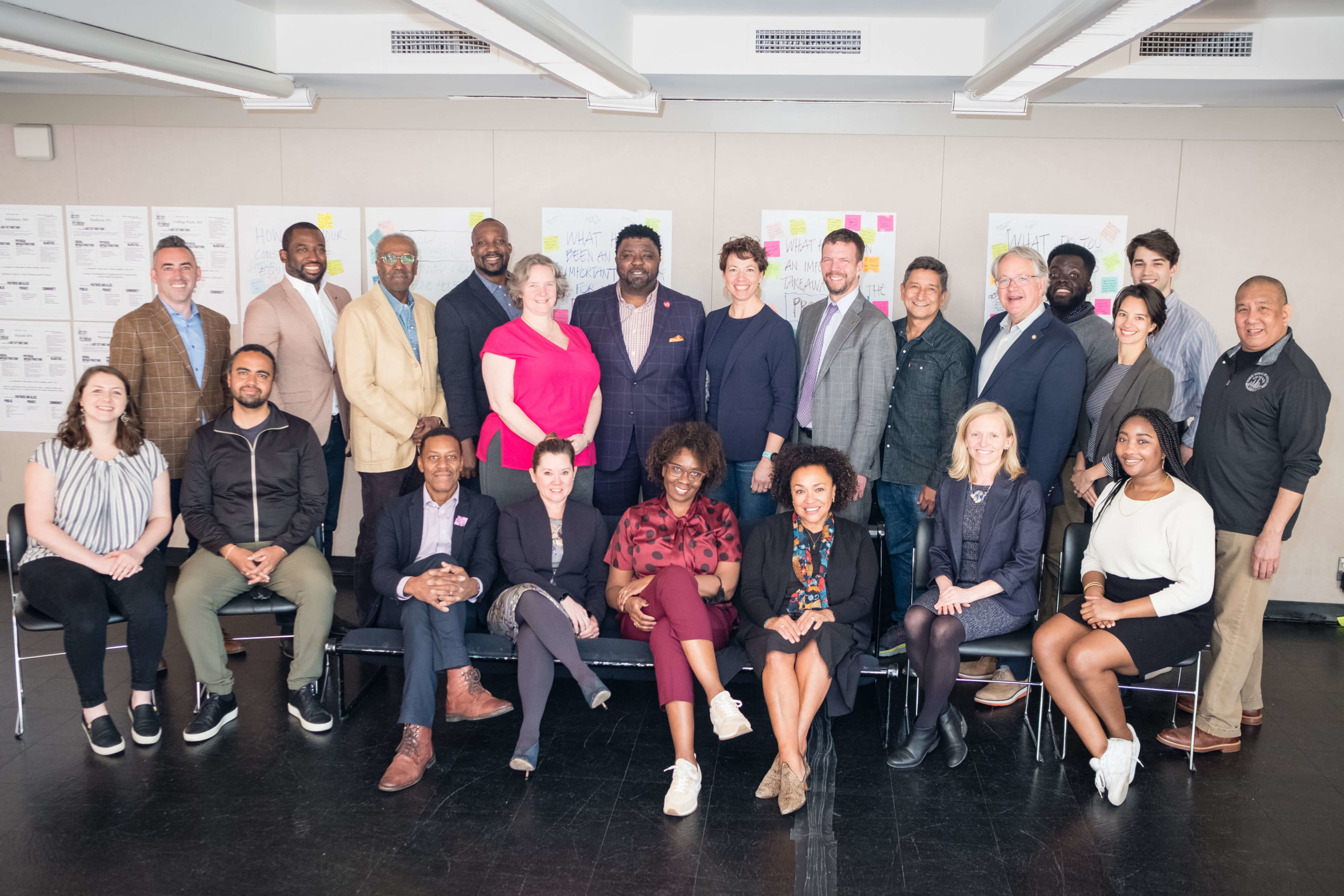“Everything we do at the GSD,” Dean Sarah Whiting said, “is affected by or affects cities.” On Friday, April 22, the GSD hosted the concluding event of the 2022 Just City Mayoral Fellowship, a collaboration between the Mayors Institute on City Design (MICD) and the Harvard GSD’s Just City Lab, supported by the National Endowment for the Arts (NEA). The event brought seven mayors together for a discussion on how design and planning interventions can promote racial and infrastructural justice.
In her opening remarks, Dr. Maria Rosario Jackson, the chair of the NEA and the first urban planner to hold the role, said: “It’s in this kind of forum that one can see the critically important role that arts, culture, creativity, and design have in advancing healthy communities and cities.”
Trinity Simons, the executive director of the MICD, shared the MICD’s ambition to “equip mayors to be the chief urban designers of their cities.” She said that following George Floyd’s murder in 2020, “We saw mayors asking: What does it mean to achieve racial justice in the built environment?” To address this, Simons reached out to Toni L. Griffin, the founder of the Just City Lab and a professor in practice of urban planning at the GSD. Now in its second year, the fellowship involves an 11-week curriculum of “readings, lectures, and open and honest discussion.” Mayors also proposed projects for their city, with design and development professionals performing “design jury duty” to share their expertise and feedback.
Just Cities, Infrastructures, and Community Building
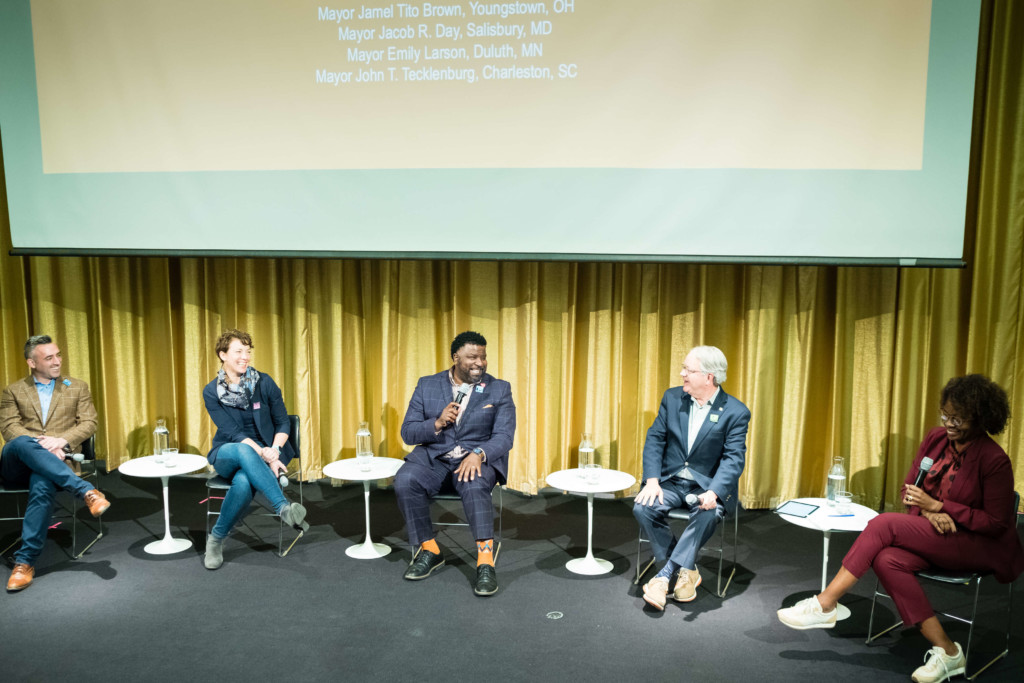
Griffin then invited the first panel of mayors onto the stage: Jacob R. Day (Salisbury, MD), Emily Larson (Duluth, MN), Jamael Tito Brown (Youngstown, OH), and John T. Tecklenberg (Charleston, SC).
Mayor Tecklenberg began by describing the importance of reconciliation in Charleston, given its history: “We are the city where almost 50 percent of enslaved Africans were brought to North America. Our city, in the early 1800s, derived its budget from the sale, the rental, and the possession of enslaved persons.” His project proposal for the fellowship was a linear park to “knit together” a historically African American neighborhood that was ripped apart by a highway project 70 years ago. “We’e going to reconnect those neighborhoods and achieve some social justice.”
A native of Youngstown, Mayor Brown noted that the city was a former steel mill town that saw a sharp decline in population after the Great Depression. Those who moved away often had more education and socioeconomic capital than those who stayed, and Brown is attentive to the inequities that still exist today, especially in infant mortality and life expectancy: “It’s not fair that if you live on one side of the tracks, you’re at 71 years,” and “just half a mile down the tracks . . . they’re at 76 or 75.” As mayor, Brown relies on citizen organizations within the city, as well as his own background as a former organizer to “get people to the table.”
It’s in this kind of forum that one can see the critically important role that arts, culture, creativity, and design have in advancing healthy communities and cities.
Dr. Maria Rosario Jackson
Mayor Larson shared her aspirations for Duluth: “How can we use the physical public infrastructure to create a sense of radical belonging for our community?” She emphasized the importance of making intentional investments to redress historical harms. “Justice takes fundamental investment, and we have built centuries of systems with great intention and investment to make them unfair. We know budgets are moral documents.” As Larson invests in new systems and approaches, she is committed to a thoughtful approach: “You can go fast and get things done, or you can go slow and embed the work.”
According to Mayor Day, symbolic and concrete work must be done to address a history of injustice in Salisbury. His administration pushed to replace a Confederate monument at a county court with a monument to three men who were lynched there. This was Salisbury’s way of “recognizing that we must tell the truth about our past.” But Day also acknowledged the incompleteness of this gesture. “Symbols matter, but symbols are fairly easy. So what comes next? . . . Decisions about paving, housing, access, and proximity to jobs are the tougher work.” Day encouraged GSD students to become involved: “The beauty of design and policy is not only that you appreciate the making of these spaces, but you’ve also gone through an education that has taught you [when] to stop the planning and start making, doing. At some point you have to build that final model, right?”
Just Cities, Infrastructures, and the College Town
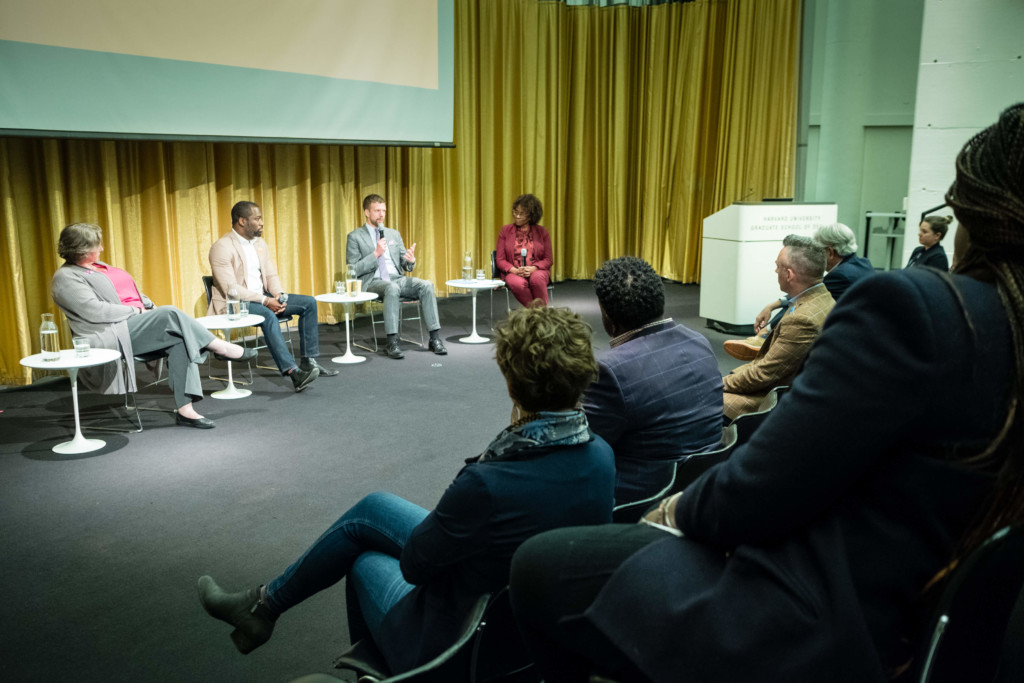
Griffin then invited the next panel of mayors to discuss how infrastructural justice concerns intersect with the needs and conflicts of college towns: Satya Rhodes-Conway (Madison, WI), Mayor Levar M. Stoney (Richmond, VA), and Patrick L. Wojahn (College Park, MD).
Mayor Wojahn noted, “The conditions of injustice in [College Park] . . . [are] things that communities all over the United States have dealt with: the legacies of redlining, segregation, centuries of discrimination, occasionally brutal violence against people of color.” He focused on Lakeland, a historically Black neighborhood that suffered disinvestment, flooding, and harsh urban renewal policies. “Two-thirds of the residents were displaced by urban renewal in the 1970s and 1980s,” he noted, and student housing placed there instead. In 2020, Wojahn and his administration “committed . . . [to] pursuing restorative justice for the residents of Lakeland—the current residents as well as the people who were displaced.”
Mayor Rhodes-Conway shared that “Madison and the community is deeply committed to justice, and deeply conflicted about what justice means.” She encouraged GSD students to consider the different ways that city staff can promote justice: “The racial equity work started, and is still primarily led by, city staff . . . people in public health, planning, finance.” These staff members, Rhodes-Conway stressed, are essential in “carrying [the work] through political transitions.” Addressing the enormous influence of the University of Wisconsin–Madison and the disparities in which students choose to remain in the city after graduation, she explained, “There are marked differences in the demographics of who stays and who doesn’t.” She said the city needs to attract and retain Black professionals.
Richmond’s history as the capital of the Confederacy, and its enduring legacy in the disparities between Black and white residents was highlighted by Mayor Stoney. “I have neighborhoods in my city that haven’t seen paving for 40 or 50 years. . . . That’s wrong, that’s not fair, and no one should have to live this way. . . . We could touch on so many topics: the lack of parks, the lack of trees, the lack of sidewalks.” Although Richmond’s five institutions of higher education have contributed to neighborhood change, they have also been integral to advocating for and pushing forward equity and justice conversations. “We are more intertwined as a community than we used to be,” Stoney explained.
A Call to Action
Community, justice, repair, and investment: these themes were central to how all seven mayors spoke of their cities. Their commitment reflects a quote from 2019 Loeb Fellow and former Vancouver City Council member Andrea Reimer that Griffin shared with the audience: “We may all have an identity that demands justice, but we also have an identity that demands participating in justice for others.” Griffin said, “This is the call to action that each of us can step into [and that] has motivated the mayors to be here.”
Watch a recording of the event.
